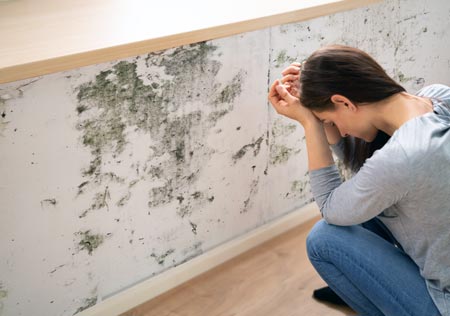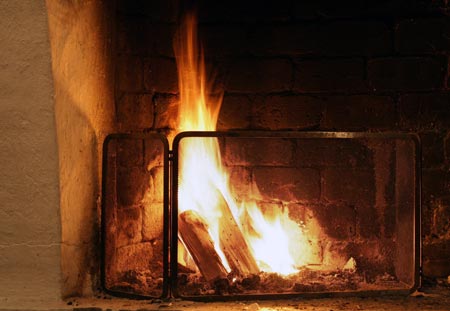Poor Indoor Air Quality: 6 Causes and How to Prevent It
Did you know that the air you breathe inside your house or office building may be more polluted than the air outside? According to the U.S. Environmental Protection Agency (EPA), indoor air quality refers to the quality of the air within and around buildings and structures, especially as it relates to the health and comfort of building occupants. Poor indoor air quality can cause various health problems, such as irritation of the eyes, nose, and throat, headaches, dizziness, fatigue, asthma, respiratory diseases, heart disease, and cancer.
What causes the air within our homes or office buildings to become so bad? To answer that question, we need to identify the common sources of poor indoor air quality. Here, we’ve compiled a list of the top 6 Causes of Poor Indoor Air Quality and How to Prevent It. In addition to the causes, we’ve also included ways to help prevent or fix the source of poor indoor air quality.
1. Asbestos
The most common cause of poor indoor air quality, especially in older buildings, is asbestos. The material is often found in paint, construction material, ceiling and floor tiles. If you have a newer home, however, it is less likely that you’ll find asbestos in it since the U.S. has already banned the material. Asbestos fibers that are released into the air and inhaled can cause lung damage and cancer.
If you suspect that your house contains asbestos, hire a professional to inspect and remove it safely. Asbestos removal can be costly and time-consuming, but it is worth it for your health and safety. According to a study by the EPA, asbestos removal can reduce the risk of lung cancer by 6 to 18 percent.

2. Natural Pollutants
Another source of poor indoor air quality is natural pollutants. These include mold and microbial growth, viruses, dust mites and pet fur, which enter your home from the outside and accumulate within your air vents and ducts. These natural pollutants can trigger allergic reactions, asthma attacks, infections and respiratory problems.
To prevent them from affecting your indoor air quality, it’s best to regularly clean your air filters, ducts, carpets, upholstery and bedding. You can also control the humidity level in your house to prevent mold growth. The EPA recommends keeping the indoor relative humidity between 30 and 50 percent. However, maintaining an indoor relative humidity at this level is difficult to achieve in humid climates. Ever wondered what causes mold to grow? Check out this list of common causes of mold in homes and buildings.
And if you’re wondering how to reduce allergens such as pet dander, dust and other particles that trigger respiratory issues, you might want to read about ways to reduce indoor allergens.

3. Appliance-Generated Pollutants
Some appliances in your house can produce harmful pollutants such as carbon monoxide (CO), nitrogen dioxide (NO2), formaldehyde, and particulate matter (PM). These pollutants can come from gas stoves, fireplaces, heaters, dryers and generators. They can cause headaches, nausea, drowsiness, irritation of the eyes and respiratory tract, and even death in high concentrations.
To reduce the risk of appliance-generated pollutants, have your appliances checked for CO emissions and ensure proper ventilation in your house. It’s also a good idea to install CO detectors and maintain your appliances regularly. According to a study by Airmax HVAC, improperly maintained appliances can increase CO levels by up to 10 times in your house.

4. Artificial Fragrances
Another cause for poor indoor air–and one that is in many homes—is household products. Air fresheners, candles, cleaning products, laundry detergents and personal care products contain artificial fragrances that emit volatile organic compounds (VOCs) into the air. VOCs are chemicals that can evaporate at room temperature and cause various health effects, such as headaches, nausea, dizziness and irritation of the eyes and respiratory tract. Some VOCs are also known carcinogens. To avoid artificial fragrances from affecting your indoor air quality, opt for fragrance-free or natural products or use essential oils instead. Also, avoid spraying aerosols indoors and store products containing VOCs in a well-ventilated area.
In a report by the Natural Resources Defense Council, an environmental advocacy group, many common household products contain VOCs that exceed safety standards set by the EPA. Some home furnishings like upholstery, carpets, rugs and decorations can also emit VOCs.

5. Radon
Radon, a radioactive gas that occurs naturally in the soil, is another culprit of poor indoor air quality. This gas can seep into your house through cracks and gaps in the foundation. Radon is odorless and colorless, so you may not be aware of its presence unless you test for it. Radon is the second leading cause of lung cancer after smoking. You can test your house for radon levels using a kit or hiring a professional. If you find high levels of radon in your house, take steps to reduce it, such as sealing cracks and openings in the foundation or installing a radon mitigation system. According to the Illinois Department of Public Health, radon levels can vary widely depending on the geology and construction of the house and can change over time due to weather and seasonal factors.

6. Tobacco Residue
Tobacco smoke contains thousands of chemicals that can pollute your indoor air quality even after the smoke has cleared. Tobacco residue or third-hand smoke can stick to surfaces such as walls, furniture, carpets and clothing, and releases harmful substances into the air over time. These substances can irritate the eyes and respiratory tract and may cause asthma and cancer. To prevent tobacco residue from affecting your indoor air quality, avoid smoking indoors.
The good news, especially for non-smokers, is that more and more restaurants, bars and worksites, are smoke-free. Currently 61 percent of the U.S. population is covered by 100-percent smoke-free indoor air policies. Another tip to help prevent tobacco residue from polluting indoor air is to regularly wash your clothes and bedding and clean your surfaces with a detergent or vinegar solution.

While we’ve discussed the more common causes of indoor air quality, there could be others that we haven’t touched on. If you’re serious about improving indoor air quality, you can invest in various tools and methods that will test air quality. An air quality monitor will measure the levels of pollutants such as particulate matter and humidity in your house. You can also use kits to perform mold and radon tests.
Another small investment is to install carbon monoxide detectors in your home, particularly outside each bedroom. These devices will alert you when there’s dangerous levels of CO, an odorless and colorless gas that comes from gas appliances and combustion sources. Want more information about CO poisoning? This list of facts on how to prevent carbon monoxide poisoning may be helpful.
By evaluating your indoor air quality and taking preventive measures, you can ensure a healthy and comfortable living environment for yourself and your family.
Hopefully, the above list will help educate homeowners (and business owners) on the causes of poor indoor air quality and how to prevent it. And, if you’re ever in need of a carbon monoxide safety expert, don’t forget about Ivey Engineering.












